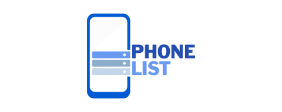Navigating the cost of graphic design services can be a complex endeavor for businesses and individuals alike. While it may seem straightforward to compare prices, the reality is that graphic design encompasses a range of services with varying levels of complexity, expertise, and outcomes. Factors such as the type of project, the designer’s experience, and the geographical location can all influence pricing. Understanding these nuances is crucial for anyone looking to invest in graphic design, whether for branding, marketing materials, or digital content. By recognizing what impacts the cost, clients can make informed decisions that align with their budget and project needs, ensuring they receive quality work that meets their expectations.
Types of Graphic Design Services
Graphic design services can be categorized into several types, each with its own pricing structure. Common services include logo design, branding, print design, web design, and social media graphics. Each category requires different skill sets and resources, affecting the graphic design services cost. For instance, a logo design may range from a few hundred to several thousand dollars, depending on the complexity and the designer’s reputation. In contrast, a comprehensive branding package that includes multiple elements—such as a logo, business cards, and brand guidelines—will typically command a higher price due to the extensive work involved. Understanding these categories helps clients set realistic budgets based on their specific needs.
Factors Influencing Costs
Several factors can influence the cost of graphic design services. One of the primary considerations is the designer’s experience and expertise. Established shadow creation services for realistic depth or agencies with a strong portfolio often charge higher rates due to their proven track record and the quality of their work. Additionally, the geographic location of the designer can impact pricing; for example, designers in major cities typically have higher living costs, which may be reflected in their rates. Project complexity also plays a significant role—more intricate designs that require extensive research, revisions, or specialized skills will generally be more expensive. Understanding these factors allows clients to evaluate whether the proposed costs are justified based on their specific project requirements.
Hourly vs. Flat Rate Pricing
When it comes to pricing models, graphic designers may charge either hourly rates or flat fees for their services. Hourly rates can vary widely based on cell phone data designer’s experience, ranging from $25 to over $200 per hour. This model can be advantageous for smaller projects or when the scope of work is uncertain, as clients pay only for the time spent on their project. On the other hand, flat rate pricing offers a more predictable cost structure, where clients receive a set price for a defined scope of work. This model is often preferred for larger projects, as it allows for clearer budgeting. Understanding these pricing models enables clients to choose the option that best fits their project scope and financial planning.
The Importance of Quality
While it can be tempting to choose the lowest-priced option when seeking graphic design services, prioritizing quality is essential for long-term success. High-quality designs contribute to a brand’s reputation, effectively communicate messages, and attract customers. Investing in experienced designers can yield a higher return on investment, as quality work often translates into increased customer engagement and loyalty. A poorly designed logo or marketing material can negatively impact a brand’s image, leading to wasted resources and missed opportunities. By recognizing the value of quality design, clients can justify their budget and make choices that align with their brand goals.
Budgeting for Graphic Design
Creating a budget for graphic design services involves careful consideration of various elements. Start by defining the scope of the project, which will help in estimating costs more accurately. Research typical pricing for the services you require, and factor in potential revisions and additional expenses, such as stock photography or printing costs. It’s also wise to leave some room in the budget for unexpected changes or enhancements that may arise during the design process. Communicating openly with the designer about your budget constraints can lead to creative solutions that meet your needs without compromising quality. A well-planned budget ensures that you can effectively manage costs and achieve your design goals.
Making Informed Decisions
Ultimately, understanding the cost of graphic design services empowers clients to make informed decisions that align with their needs and budgets. By considering the various factors that influence pricing and recognizing the importance of quality, clients can select the right designer or agency for their projects. It’s crucial to engage in open discussions about budgets, expectations, and project scopes to ensure alignment between both parties. When clients invest the time to understand these elements, they can achieve successful design outcomes that elevate their brand and effectively communicate their message to their audience.

